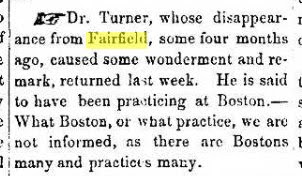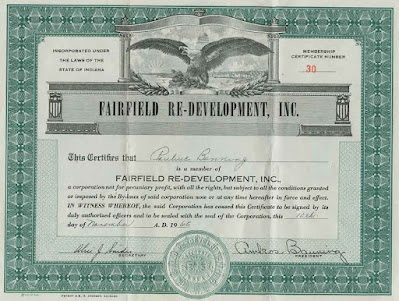Much of our history depends on our memories, real or modified to fit the fun.
Feel free to peruse the rest of the blog, with the oldest entries at the bottom of the menu on the right. You may share the links with others.
Glenda Reese Smith
Since we moved a few months into my third grade, my teacher
memories are of Mrs. Moore in first and second grade. I spent a lot of time
wondering about her eye patch. Was there an eye behind it? Or just a big hole?
Not that I would ever ask, of course.
Well,
I just loved that woman. First of all, she would pull our loose teeth. She
pulled my first one. And not long after that, another one was loose, but I
managed, quite by accident, to pull it myself in the restroom. I thought she
might be mad, but she stood me up in front of the class and said how proud she
was that I had done that by myself.
Seriously,
if I could have forced more teeth out, I would have, because nothing was better
than to have Mrs. Moore brag on you. [And just as an aside to the tooth thing
... Rosemarie Hanna brought a dime to school every day, and after lunch she
would spend it at the Davis store. Her friends, me included, were always happy
to offer our advice on what to buy. A dime. Every day. A dime was what the
tooth fairy brought me for all my hard work yanking out my own tooth. [I was
sure Rosemarie was rich and probably lived in a castle.]
One
day, early in my second grade year, my mom drove to school to pick us up. I
don't know why--it wasn't a usual thing.
Anyway,
Mrs. Moore came out to the car to talk to her. I jumped in the back seat with
my little brother, Nicky, who was five. Nicky started reading out loud from my
reader. (Yes, we played school a lot at home.) Mrs. Moore heard him reading and
told my mom, "Put him on the bus tomorrow."
And
just like that, Nicky was in first grade. Simple times. Shortly after he
started to school, Nicky got sick. He was in and out of the children's hospital
in Indianapolis, sometimes for weeks at a time. And I was jealous. I was sure
he was having a great time opening presents and learning to make potholders.
When it was time for him to go back to the hospital, he would cry because he
had to go, and I would cry because it wasn't me.
Mrs.
Moore understood that. She gave me the responsibility of reporting on Nicky
and, if my report wasn't good, he would not be eligible for the nickel conduct
drawing at the end of the week. And so I would (not so sadly or truthfully)
inform her that Nicky had misbehaved in the hospital, and she would gravely put
that mark beside his name. Looking back, I see the error of my ways.
If
his name had remained in the drawing, I would have had a second chance at that
nickel!
Mrs.
Moore had an interesting way of treating injuries. If you scraped your knee or
elbow on the playground during recess, she would clean it up, paint it with
mercurochrome, and then paint your initials on your hand -- your own badge of
courage.
However,
if you were injured doing something careless or something you should not have
been doing (like wrecking Carol Klein's bicycle at recess), Mrs. Moore cleaned
it up, painted it liberally with stinging iodine and, you guessed it, no
initials. And to make matters worse, my parents were aware of her system and
iodine is impossible to wash off.
And
my last, and fondest, memory of Mrs. Moore ... My mother had made me a blue
plaid dress with a circle skirt from a feed sack I had picked out myself from
the grain mill in Bath. To someone who often wore her brother's hand-me-downs
to school, I thought it was beautiful.
I
thought I was beautiful. And so the very first day I wore my beautiful new
dress to school, I was absolutely prancing.
And
so at recess I was at the top of the slide. Just as I started to go down, Bimbo
Browning accidentally(?) stepped on the hem of my dress. As I slid down, my
dress started ripping in about a one inch strip around and around and around.
When
I hit bottom, I was standing in the top of my dress and my slip. The long tail
of what had been my twirly skirt was stretched up the slide, with the end still
under Bimbo's foot.
I
was mortified. I reeled my dress in and ran screaming into the classroom. Mrs.
Moore, bless her heart.
She
moved a desk into the coat room. She took my dress off and gave me her sweater.
And all afternoon, while teaching, Mrs. Moore sat at her desk and basted my
dress back together enough that I could wear it home.
Wilson: original Fairfielder
Fairfield was platted October, 1815, by Hugh Abernathy, George Johnston, Tomas
Osborn and James Wilson, the four corners of their respective lands being in
the center of the platting.
James Wilson
was born in 1779 in Virginia. His father was one of four brothers who served in
the Army during the Revolution and was the only one of the four to survive the
conflict.
In 1800
James came to the Indiana Territory, settling in Jefferson County where, in the
following year, he married Nancy McCarty, who had been born in a Kentucky fort
in 1785.
In 1808
Wilson decided to try another locale and with his rapidly increasing family
moved on to Franklin County. By 1815 the population of this Whitewater Valley
county had increased to the point where another trading post, closer to some of
the settlers than Brookville, seemed necessary and feasible.
Consequently,
Wilson and the three neighbors platted a town to be named Fairfield, located in
the northern section of the county and centered at the spot where the lands
owned by each of the men came together.
Evidently
they all had high hopes for the future of the then non-existent Fairfield, even
believing that someday it might become a county seat of a new political
subdivision for “the proprietors donated a public square in the center of the
plat and this is still used for such minus the coveted courthouse.”
If Wilson
was disappointed in the non-growth of his first plan, he was willing to try
again.
About that
time (1817), Jacob Wetzel had finished work on his historically significant
“trace” across Rush and Shelby counties.
W(H)ETZEL TRACE BLOG ITEM FROM THIS WEBSITE
Soon after
Wetzel had completed his work on the trace, Wilson, accompanied by a “man named
Logan and one named Hanna,” came up the newly opened path, following it as far
as its junction with Blue River.
Here, Wilson
decided, was a goodly site for a new home and he immediately returned to
Fairfield to fetch his three oldest sons. The four soon returned to the spot he
had chosen and began the building of a cabin — the first home in Shelby County.
On January
1, 1819, Wilson, his wife, four daughters, a baby boy and the 11-year-old Isaac
started on their journey to their new abode.
Around nine
o'clock in the evening of the third day, they arrived at their destination and
found that the older boys, who had completed the log structure during their
father's absence, had a roaring fire burning on the hearth to welcome them.
Caw, caw
Jimmy Boyd lived in the house just south of the Methodist Church.
We lived in the house directly north of it. Like all kids, we lived our fantasy
world with a degree of sincerity … one that lasted the length of the summer. When
school started, we’d drop the whole thing.
But there was a barn not too far from the house that had a loft.
We took a broom up there, swept it out and made it our clubhouse.
OK, now that we had a clubhouse, we needed a club.
A pretty special one, we decided. No girls allowed, naturally. We
were in fourth grade.
Owing to the time, two major images came to mind:
DAVY CROCKET
PETER PAN
So, Jimmy, Joel and I developed, built and maintained the
exclusive (very very exclusive) Jolly Roger Club.
We were pirates.
Why we weren’t frontiersmen was simple: Davy Crockett had been
killed at the Alamo and that was last year, anyhow. We had lost our coonskin
caps.
When it was time for the club to meet, Jimmy would ride over to
our house on his bike, stop outside and go “Caw, Caw!” That was the sign. A bit
of a takeoff, it was, on the old, really really old “Lassie” show where the kid
with the dog (the one before Timmy; the kid, not the dog)) had a friend named
Porky or Sylvester. Their greeting call was “E-Aw-Kee.” Do your own research.
But when meetin’ time came, we met. We shared Kool-Aid and Reese’s
Cups and almost anything we could get to eat. Tomatoes served nicely.
We had a flag, complete with a skull and crossbones on it and a
few other special secret codes and signs. No girls allowed.
Jimmy was learning to play the clarinet and his mother made sure
he did his lessons. Joel and I were either inept at music or disinclined to
care much about it, but Jimmy was doing a pretty good job. I could never blow a
note.
Jim Boyd was director of music at Franklin County High School in Brookville for many years, which made us all proud.
-- jcu























































